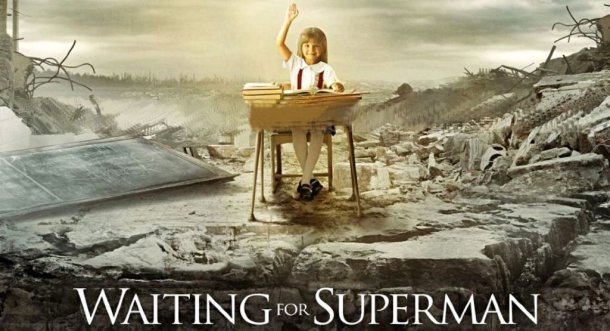
The White Kid In "Waiting For ’superman'"
09/29/2010
The most curious segment of David Guggenheim’s celebrated school reform documentary, Waiting for "Superman," is devoted to the one white out of the five kids trying to get picked to attend a charter high school. E. is an 8th grader in posh San Mateo County in Silicon Valley. Her neighborhood high school is Woodside H.S., which is a few miles north of Stanford U.
But her English-accented mother is desperate to keep her out of Woodside and get her into Summit Prep, a charter. How come?
Because, according to Guggenheim’s documentation, if E. attended her neighborhood school, Woodside, she'd be placed in the lower track. But Summit Prep has only one track.
I looked up some facts on these two schools.
Yes, admission to Summit Prep is by lottery, but you can’t pick up an application without the student attending a six hour session and the parent attending a 90 minute session. You cannot get your hands on an application to be in the lottery any other way. There are various other devices as well to make sure that parents who enter the lottery are dedicated.
Woodside, the neighborhood school, is about 33 percent white and 54 percent Hispanic (the school district covers East Palo Alto). Not many Asians go to Woodside, and it has "only" three national merit scholars in the most recent year, compared to 30 to 60 at some heavily Asian Silicon Valley schools.
So, reading between the lines, we can infer that E.’s mom wants to keep her out of the Hispanic-dominated track in high school.
Keep in mind, though, that there aren’t too many gangbangers in the lower track at Woodside. Their 2009 California Academic Performance Index scores aren’t bad: Woodside 2009: White 839 Hispanic 702 Difference 137
For the whole state, 9-12 API’s in 2009 for Hispanics were 653, so the Hispanics at Woodside are above average. For whites, the state average was 790.
But, just as the Guggenheim-Shue children are sent to a Westside private school to develop a peer group of the kind of children who go to Westside private schools, so does E.’s mom want to keep her away from a mostly Hispanic peer group.
At the Summit Prep charter school, the APIs are somewhat better for both groups:
Summit Prep 2009 White 889 Hispanic 744 Difference 145
But, do you notice something? Summit is, I believe, the only one of the five charter schools celebrated in the documentary to have enough white students to measure the size of the ethnic achievement gap. And, it turns out, the ethnicity gap is slightly larger at the celebrated charter school than at the neighborhood school.
I suspect this is generally true: improving schools raises everybody’s performance, but it doesn’t Close the Gap.
